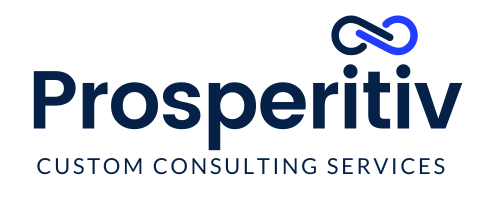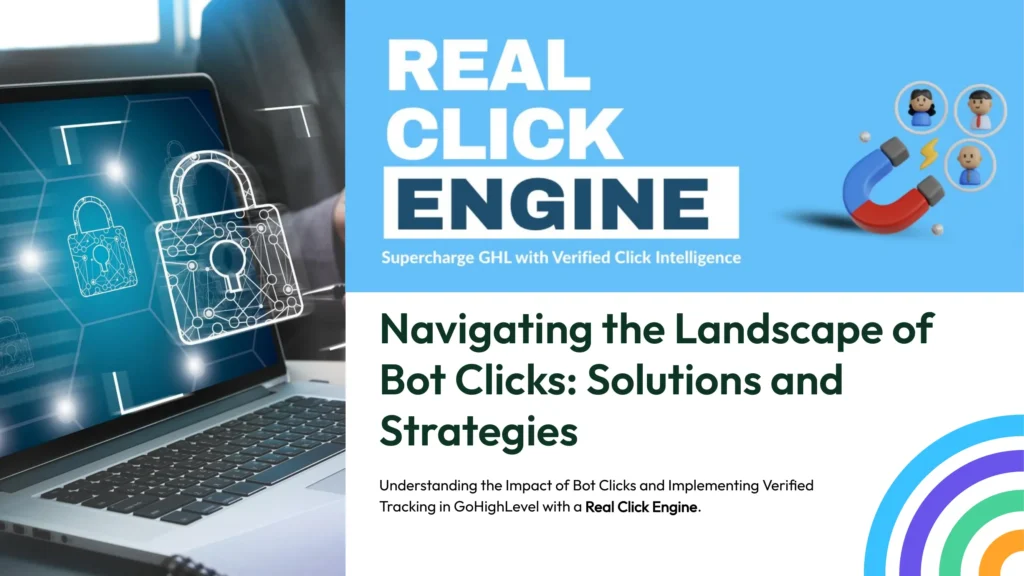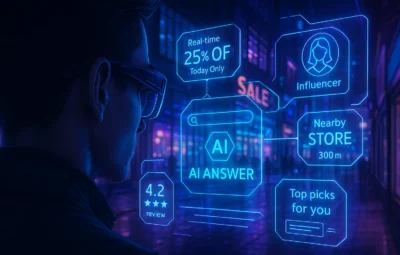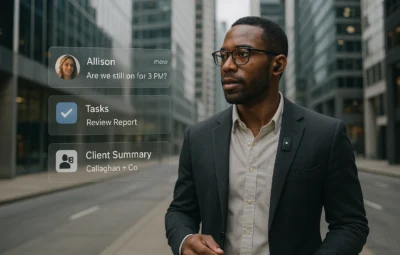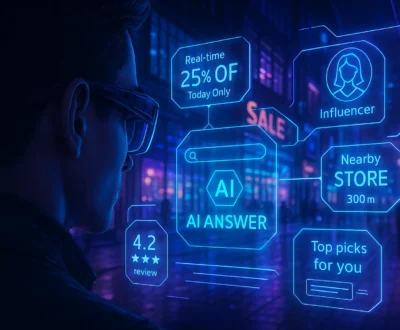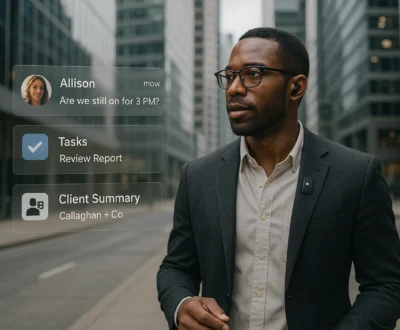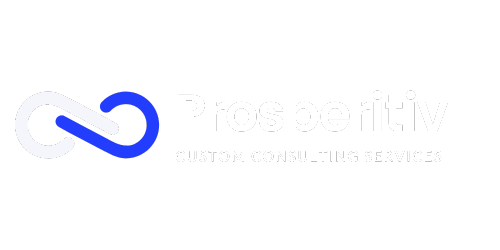Click Tracking That Actually Works: How to Stop Bots from Breaking Your Funnel
Click Tracking Is Broken: Why Most Funnel Metrics Can’t Be Trusted
Click tracking has become one of the most relied-on metrics in digital marketing, but there's a growing problem few are talking about: the clicks we count often aren't real. Whether it's a bot, an email security scanner, or a mistimed automation, inaccurate click tracking leads to poor decisions, misfiring funnels, and wasted time.
This article explores the limitations of GoHighLevel's native tracking system, how bot filtering (even when enabled) often falls short, and how to ensure you're only tracking real human actions that matter. As a GoHighLevel agency ourselves, we believe in the platform—but also in improving and customising it for more reliable outcomes.
What Is Click Tracking and Why It Matters
Click tracking is the process of monitoring when users click on links, buttons, or images across emails, landing pages, and websites. For marketers, it’s an essential way to measure engagement and performance. High click-through rates are often seen as a sign of success. But here’s the catch: not every click comes from a real person.
In the past year, email security tools, bots, and automated scripts have increasingly triggered false click events. These non-human interactions are then recorded as genuine engagement, skewing your reports and triggering automations based on faulty signals.
According to Paved, around 20% of your click data could be coming from bots, and in some cases the number climbs to 90%. For many newsletters, 1 in 5 clicks (or even more) may be from bots, not humans.
Email Security Tools and Bot Clicks: The Silent Saboteurs
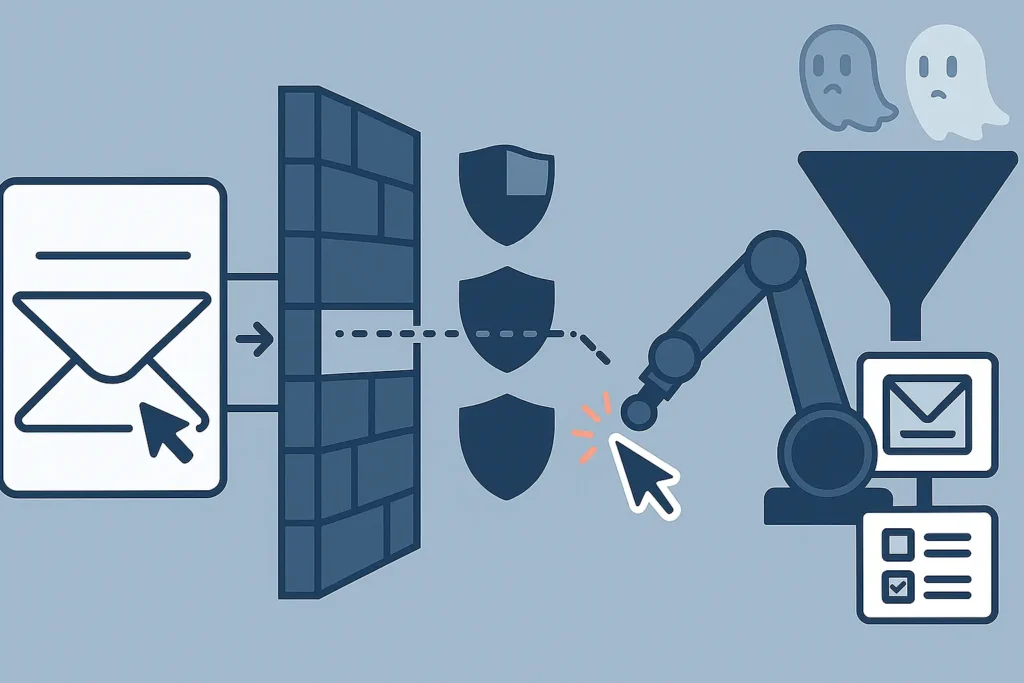
When you send an email, especially in B2B contexts, it often passes through security software that scans links for threats. Security scanners (e.g., Microsoft Defender, Barracuda, Mimecast) routinely follow every link in an email to protect users. They essentially "click" every link in the message to check for malware or phishing pages.
Unfortunately, these clicks are recorded by most CRMs and marketing platforms as if they were real user interactions. This means your contact may appear to have clicked a link or shown interest, when in reality, their email server did the clicking.
The same applies to landing pages where bots or script-based crawlers interact with buttons or triggers, giving the illusion of genuine human activity.
The Funnel Fallout: Why Faulty Click Tracking Wastes Time and Money
Misleading click tracking doesn’t just distort reports—it causes downstream damage. Automated email sequences, sales workflows, and lead scoring systems are often triggered by clicks. If those clicks aren’t real, your team is following up on phantom interest.
False triggers can:
- Enrol cold leads into warm lead sequences
- Skew A/B test results
- Attribute conversions to the wrong sources
- Waste sales reps' time chasing ghosts
- Create inflated dashboards that mask real performance issues
For funnel builders, this is a frustrating reality. The system shows activity, but the outcomes never match. That disconnect is often due to click tracking that can’t tell the difference between bots and real buyers.
Vanity Metrics vs Meaningful Metrics
It’s easy to be impressed by a high click-through rate or open rate. But these are often what we call "vanity metrics": numbers that look good on a dashboard but don’t necessarily correlate with meaningful engagement.
Examples of vanity metrics:
- Email open rate (easily manipulated by image loading or scanners)
- Click-through rate (includes bot clicks and security scans)
- Session duration (can be inflated by non-human traffic)
- More meaningful metrics include:
- Verified human clicks
- Time to conversion
- Real event triggers (based on confirmed user interaction)
Knowing the difference is vital for any business relying on marketing data to make decisions.
Why Many Native Click Tracking Tools Still Fall Short
Many software solutions, like GoHighLevel, does offer a bot detection feature which users can enable in the settings area. It can help reduce the impact of fake clicks on statistics and prevent certain automations from firing. However, this feature is often limited and doesn’t provide a comprehensive solution.
Here’s why:
- It works only at a basic level, identifying known bots but not all email security scanners or custom scripts.
- It doesn’t clean up your actual reports; even filtered clicks still appear in analytics.
- Workflow triggers may still activate if not manually reconfigured or routed through more advanced filters.
- There’s no true validation of human intent, only a binary filter based on detection lists.
The result?
Even with bot detection enabled, you can’t rely always on click tracking for critical business decisions or workflow logic or accurate reporting. Please know that we not saying this to criticise GHL as it’s a powerful platform with incredible flexibility. But, like all systems, it sometimes needs a custom approach to solve specific use cases.
Finding a Fix for Inconsistent Click Tracking
Many people ask questions like “How do you fix bot clicks?” or "What can I do reduce the impact of robot clicks?"
On one hand, platforms like GoHighLevel are trying to improve detection. On the other, automation builders and marketers are spending hours troubleshooting broken workflows caused by phantom clicks. While both sides are valid, neither of them offers a complete fix.
Introducing the Real Click Engine: Verified Click Tracking for GHL Funnels
After dealing with broken automations and bloated click reports, we created our own solution: the Real Click Engine. It's designed for marketers and funnel builders who need to trust their automation triggers.
The Real Click Engine is not a tool; it’s a lightweight solution made up of a few well-tested steps across different areas of GoHighLevel. Using a combination of custom form logic, automation routing, and webhook-based verification, it filters out bot clicks, email scanner triggers, and script-based interactions.
Only real, human-verified clicks pass through to trigger workflows or automation steps. Think of it as a click firewall for your funnel: nothing gets through unless it's the real deal.
What About Click Tracking and Reporting?
While Real Click Engine (RCE) is powerful for automation integrity, it does not replace or enhance the native analytics or dashboards in GoHighLevel.
What RCE does:
- Filters out bot/scanner clicks before triggering workflows
- Ensures only real human interactions activate automations
- Prevents false positives in lead scoring, tagging, or follow-ups
What RCE doesn’t:
- Modify GHL’s built-in reporting (e.g., Email Open Rate, Click-Through Rate)
- Clean historical data or analytics dashboards
- Remove bots from GoHighLevel performance charts
Can This Help With Click Tracking On Other Platforms?
Although the Real Click Engine was built for GoHighLevel, the logic behind it is mostly platform-agnostic. The approach could be replicated or adapted for other platforms that support webhook triggers, conditional logic, and form tracking. This makes it a potentially universal solution for marketers and CRM users.
If you’re looking for a solution that purifies reports, the native GHL platform still falls short. But if your priority is operational accuracy, ensuring automations only fire when a real human acts, RCE delivers exactly that.
Even though the Real Click Engine doesn’t modify your GoHighLevel reporting dashboard, you can still track verified clicks. You can do this by using tags, custom fields, or smart lists inside GHL.
A Note on Uniqueness and Transparency
We’ve done extensive research with hours of deep dives, reading support docs, Reddit threads, community posts, and GHL groups. In our opinion, and based on everything we’ve seen, there doesn't seem to be another solution like the Real Click Engine.
That said, we include this with honesty and transparency: we cannot guarantee no one else has quietly built something similar for themselves. But if they have, they’re not openly sharing it.
Until proven otherwise, the Real Click Engine should be the go-to method to verify real human clicks before triggering automation in GoHighLevel.
What Other Methods or Solutions Exist Online for Accurate Click Tracking?
During our research, we found several suggestions and partial workarounds shared by the community:
- ClickCease / Anura / TrafficGuard: Great for filtering paid ad traffic, but not practical for email click validation or internal funnel workflows.
- BotSense (used with ActiveCampaign): Improves reporting accuracy, but does not prevent false workflow triggers.
- HubSpot Smart Send / Bot Filter: Primarily adjusts analytics, not workflow logic.
- URL Parameter Tricks: Some suggest adding unique URL parameters or hidden pages to detect humans—but this is unreliable and often clunky.
- Conditional Triggers + Wait Steps: A clever but brittle method that adds delays to weed out scanner clicks, though it doesn’t fully verify human intent.
These methods offer partial improvements, but most are either technically complex, inconsistent, or only work within specific platforms.
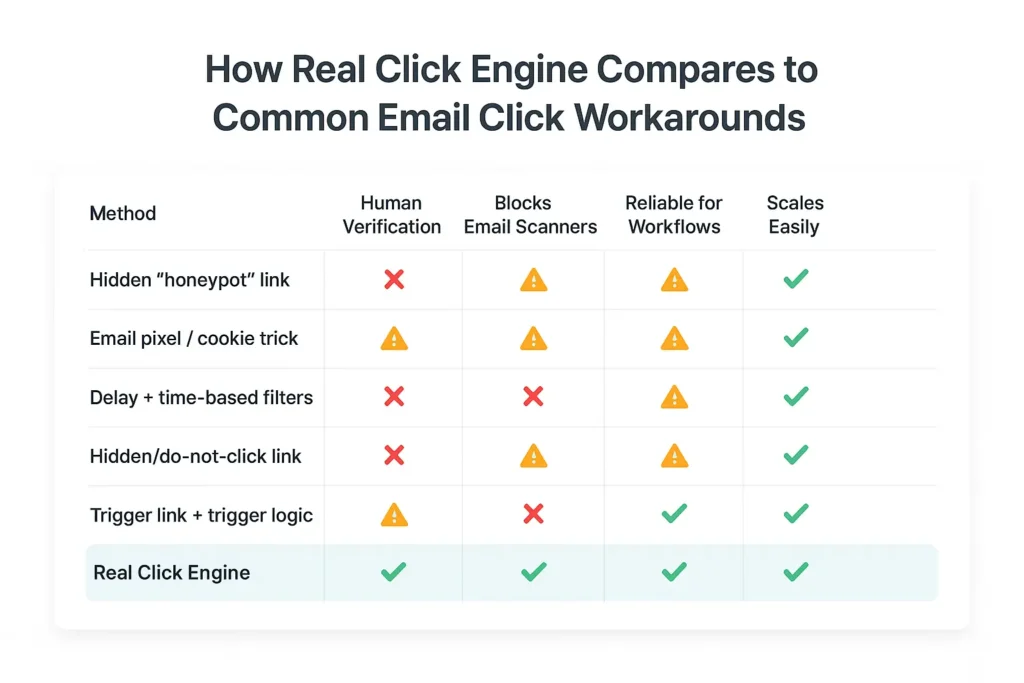
Final Thoughts: A Smarter Way to Utilise Click Tracking
Click tracking isn’t going away, but it needs to evolve. As email security and bots become more advanced, relying on outdated methods to measure success is a losing strategy.
We love GoHighLevel as it powers our agency and our clients' growth. However, we've learned that sometimes, the platform needs a strategic enhancement which is where the Real Click Engine comes into the equation.
If you're ready to start trusting your funnel logic again, the Real Click Engine solution is ready to plug in ... well, almost. No code. No hype. Just smarter automations for GHL agencies and users who care about accuracy. If you liked reading this, follow our blog for more fascinating updates on SaaS, business marketing tips, AI Agents and much more.
FAQS:
Click the + to read any answer or visit our most FAQ page to review the most frequently asked questions across all our Elite Locations.
If you click on a ‘Category’ or ‘Tag’ link, the page will ‘refresh’ and reload the page showing the top of the page first, you’ll then just need to scroll down to the FAQ section to see the results for the Category or Tag you selected.
Some red flags include seeing a high number of clicks with zero engagement afterward, email sequences firing with no replies or follow-up actions, and unusual patterns—like “activities” being triggered at the exact same time for hundreds of contacts. This often happens when email scanners or bots trigger links before a human ever opens the email. To fix this, use a solution like the Real Click Engine, which verifies whether the click is made by an actual person before letting the funnel continue.
Click tracking refers to the process of monitoring when someone clicks a link in your email or on your landing page. However, not all clicks are real. Many email security tools and bots automatically scan emails for malicious links—causing false clicks that trigger automations, skew reports, and waste your team’s time. That’s why reliable click tracking requires more than just link monitoring—it needs intent validation.
A real click happens when a human recipient actively clicks a link in your email with intent—usually leading to engagement, a visit, or a conversion. A bot click, on the other hand, is triggered automatically by email scanners or spam filters that test every link for security purposes. While helpful for protecting users, these bot clicks can mislead marketers by triggering automations, inflating click-through rates, and making reports unreliable. That’s why understanding the difference is crucial for accurate email marketing performance and workflow setup.
Recent Posts
Popular Posts
About us and this blog
We are a digital marketing company with a focus on helping our customers achieve great results across several key areas.
Request a free quote
We offer professional SEO services that help websites increase their organic search score drastically in order to compete for the highest rankings even when it comes to highly competitive keywords.
Subscribe to our newsletter!
More from our blog
See all postsRecent Posts
- Are AI Summaries Killing Your Traffic — or Creating a New Opportunity? September 11, 2025
- Synthetic Intelligence Is Coming. What SMEs Should Know August 29, 2025
- AI Smart Glasses Will Rewrite Marketing: Are You Ready for GEO? July 24, 2025
